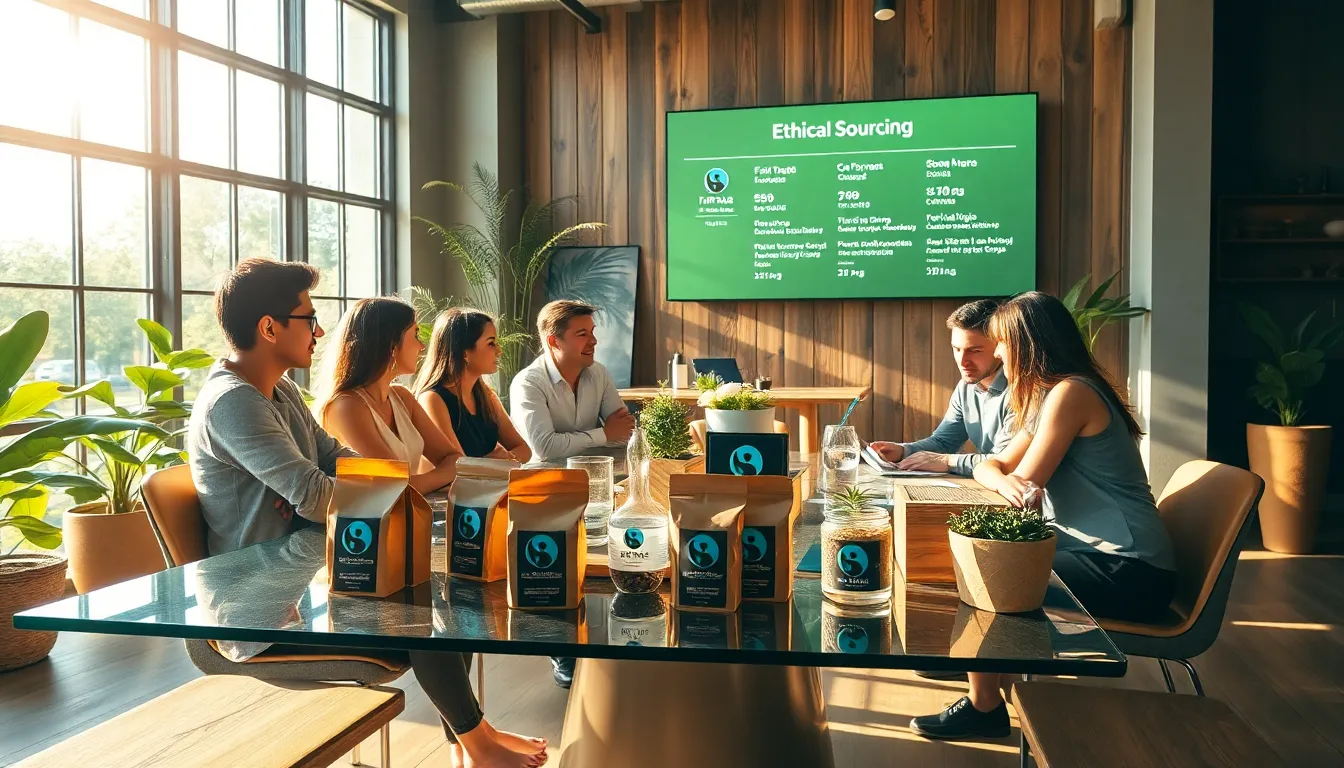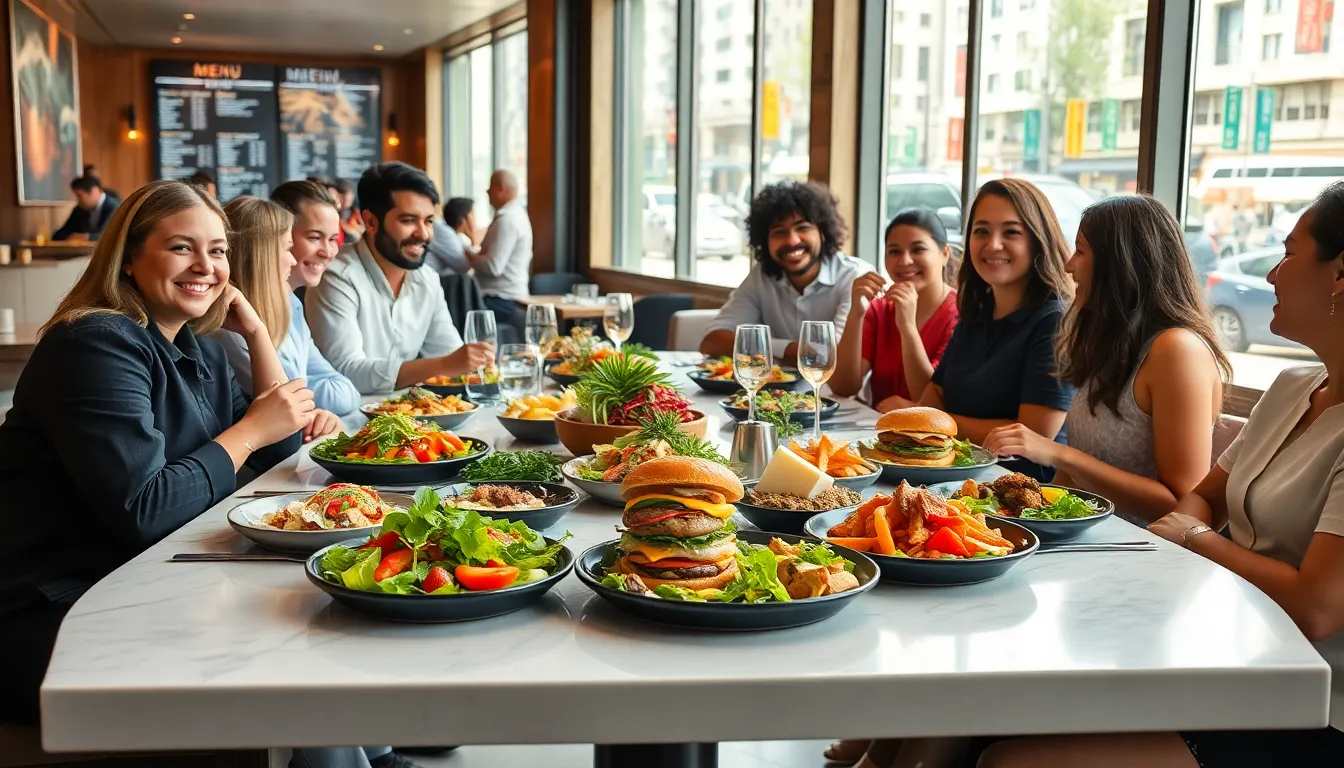Table of Contents
ToggleThe world of food and beverages is a constantly evolving landscape, where each year brings new trends that capture consumers’ palettes, and sometimes their hearts. From the rise of sustainability to the increasing prevalence of plant-based options, it’s a culinary revolution that bossed its way into countless kitchen tables. If you think trends in the food and beverage industry are just about what’s popular on Instagram, think again. Let’s jump into the exciting developments that not only tantalize taste buds but also shape our global eating habits.
Sustainability And Ethical Sourcing

When it comes to the latest trends in food and beverage, sustainability has taken center stage. No longer just a buzzword, sustainable practices are now core tenets of many businesses. Companies strive to reduce waste, minimize their carbon footprints, and ethically source ingredients.nnTake coffee, for example. With a growing awareness around climate change, consumers now seek brands that prioritize Fair Trade and organic certifications. According to a survey, 73% of millennials are willing to pay more for sustainable products. They’re not just buying coffee: they’re buying a story, a commitment to the planet, and, let’s be honest, a solid Instagram post.nnMoreover, brands are increasingly transparent about their supply chains, educating consumers about where their food comes from and how it’s made. This openness builds trust and loyalty, leading to stronger customer relationships.
Plant-Based Alternatives
Plant-based alternatives are not just a fad: they represent a significant paradigm shift in the food and beverage industry. From burgers to cheese, companies are rolling out more innovative plant-based options daily.nnThis surge can be attributed to a variety of reasons. Health consciousness is rising, with many consumers becoming more mindful of their nutritional intake. A study found that 39% of Americans are actively trying to include more plant-based foods in their diets, largely due to health benefits. And, of course, many are venturing into plant-based lifestyles for ethical reasons.nnIn response, food giants are investing heavily in R&D, launching realistic meat substitutes that are part culinary masterpiece and part magic trick. Nobody’s complaining when that gives consumers their savory fix without the guilt. Plus, with new technologies, the flavor profile of these alternatives is improving, making them indistinguishable for many.
Technology Integration In Food Services
The influx of technology in food services is revolutionizing how people experience dining. The days of flipping through paper menus like it’s 1999 are nearly behind us. Today, digital menus, mobile ordering, and contactless payments dominate the landscape.nnRestaurants are not just upgrading their tech for fun: they’re doing it to enhance consumer experience and streamline operations. Think about it. How many times have you seen a table where everyone’s staring at their phones? Those same gadgets can now showcase tantalizing visuals of menu items, provide nutritional information, and even offer personalized recommendations.nnAdditionally, kitchen automation and artificial intelligence are becoming increasingly relevant. Robots that can automate food prep or even deliver meals may sound like science fiction, but they’re stepping into our restaurants right now. Automation aims to reduce labor costs and ensure consistency, essential for customer satisfaction. The notion that tech is taking over dining is worrisome for some, yet it opens up opportunities for creativity and efficiency in ways that weren’t possible before.
Health And Wellness Focus
As people continue to prioritize their health, the food and beverage industry is shifting accordingly. More consumers are turning to products that not only taste good but also contribute to their overall well-being. Health-conscious snacking has become a thing, not just a trend but a movement.nnThe rise of immunity-boosting ingredients like turmeric, elderberry, and probiotics is a prime example. With so much information available about health benefits, consumers are empowered to make informed choices. This has led to an explosion in functional foods, items that provide health benefits beyond basic nutrition.nnFurthermore, beverage brands are stepping up their game by introducing drinks infused with vitamins and other functional properties. This shift ideally meets the demand for on-the-go options, proving that convenience doesn’t have to compromise health. It’s a win-win situation, where consumers enjoy delicious flavors while keeping wellness at the forefront.
Personalization And Consumer Experience
Personalization has emerged as a powerful trend in the food and beverage industry, with brands harnessing data and technology to tailor experiences. Consumers thrive on unique experiences, and the industry is responding in kind.nnCustomized meal kits, personal food delivery, and even personalized flavor profiles are now at everyone’s fingertips. With services allowing customers to build their own meals, it’s about empowering them to create dishes that resonate with their taste buds. According to recent studies, 71% of consumers feel frustrated when their shopping experience isn’t personalized. Brands are taking note.nnIn addition, savvy businesses have adopted loyalty programs that cater to individual tastes, enhancing consumer relationships and encouraging repeat patronage. Customers who feel recognized and valued are more likely to return, making personalization a strategic advantage in today’s competitive landscape.
Global Flavors And Fusion Cuisine
Traveling the globe without ever leaving your kitchen? It’s all possible thanks to the rise of global flavors and fusion cuisine. As people grow more adventurous with their taste preferences, culinary combinations are creating excitement.nnGone are the days when a simple pizza would satisfy. Today, pizza can be topped with kimchi, or tacos might be infused with Korean BBQ flavors. This cross-cultural approach allows culinary traditions to merge, creating a smorgasbord of innovations.nnConsumers are more inclined to try these experimental pairings, leading chefs and brands to recognize the opportunity for creativity. The result is an eclectic mix of flavors that speak to a growing global connectivity in food culture. In a world where our dining options are as diverse as we are, the food and beverage industry continues to thrive by showcasing global influences.
Impact Of Delivery Services On The Market
The convenience of delivery services cannot be overlooked when discussing trends in the food and beverage industry. As lifestyles grow busier, consumers frequently favor home delivery options where they can enjoy restaurant-quality meals from the comfort of their couches.nnThird-party delivery apps have integrated themselves into our lives, making ordering as easy as a few taps on a screen. With this increasing reliance, restaurants have had to adapt their operational models to ensure that food reaches customers in prime condition, regardless of distance.nnBut it’s not just convenience that drives this market: it’s also the experience. Many platforms now offer user reviews, ratings, and even curated lists, transforming the way meals are chosen and enjoyed. The result? A more informed consumer base that demands quality with every order. As food delivery services continue to impact the market, they are reshaping how restaurants strategize and thrive in this evolving landscape.







